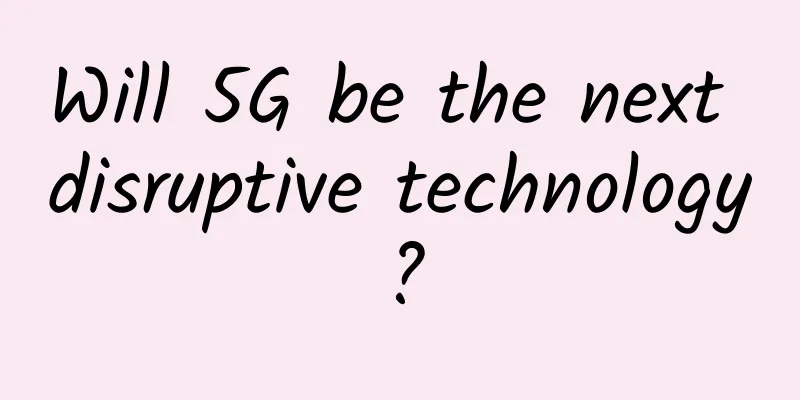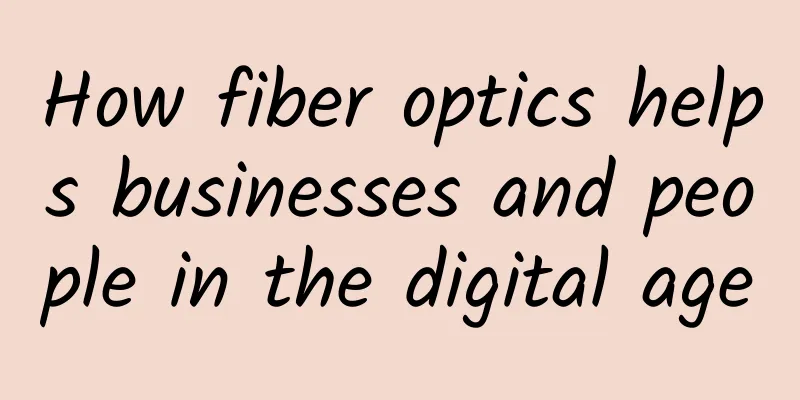Will 5G be the next disruptive technology?

|
The telecommunications industry likes to use the word "cyclical" to describe the ups and downs it experiences when introducing new technologies, but when it comes to technology adoption, the term "reincarnation" is more appropriate. The adoption path of technology has become clear: the next generation of technology enters the field of vision, is quickly regarded as a game-changer, and is eventually replaced by another new technology. The 5G standard that has generated a lot of hype is an example of this.
After all the hype and standard setting about 5G, it seems inevitable that the industry will be disappointed with 5G. The real game-changer is that 3G ushered in the mobile Internet era, but it couldn't cope with the demand for data. The subsequent 4G standard improved this problem and increased the speed of data transmission (some observers believe that 4G simply made 3G better). Mobile Internet has underpinned the smartphone revolution and has had a huge impact on the way people live and work. It has driven the development of the digital economy and fueled digital pioneers like Uber, which has disrupted the taxi business. But industries other than telecoms have benefited greatly from the growth of technology. While smartphone sales have soared, telecom companies’ revenues have not grown, but have fallen. In the UK, mobile giant EE (now part of BT Group plc) went from £6.2 billion ($7.5 billion) in 2011, as it rolled out 4G technology, to £6 billion ($7.3 billion) in 2015. Despite carving out markets for fixed-line broadband and TV during that period, the operator’s revenues inevitably fell as consumers cherished their devices but were indifferent to the networks that connected them. This situation is likely to worsen with the launch of 5G in 2020. From a consumer perspective, the upcoming technology will further increase the speed of connections. It will also effectively reduce network latency, or the delay that occurs during data downloads. As with 4G, these features should support the use of more advanced data services, such as ultra-high-definition video. However, users who already enjoy a high-quality audio and video experience on 4.5G networks will notice the additional benefits of 5G. In addition, many services that consumers really value do not require high-speed or low-latency connections. John Strand, an analyst at Strand Consult, is not optimistic about 5G technology, citing reasons including: "People are likely to find that most 5G services will work on 4G networks." He wrote in a series of predictions in 2017: "The technology change from 4G to 5G will not be as sharp as the change from 3G to 4G." Experience has shown that faster connections do not lead to any kind of sales growth. "We have been adding to our database since the launch of 4G, but the revenue trend has been continuously declining and has been falling since 2008," said Bengt Nordström, CEO of Northstream's market research and consulting business. "The launch of 5G does not mean that revenue will grow, but it will help operators retain existing subscribers." Indeed, although Nordström believes that large-scale deployment is already six years away, competitive pressures will sooner or later force operators to invest in 5G networks for consumers. However, the real interest in 5G is in enterprise users and the public sector, whose digital products and services require high transmission speeds. The low latency brought by 5G may allow car companies or healthcare providers to enter uncharted territory and occupy an important position in the so-called IoT. At a recent London press conference, Sami Elhage, president of Nokia Mobile Networks, said: "Low latency is the biggest driver for 5G networks." Generation why? It is not difficult to see how IoT can change the entire industry and bring significant economic benefits. Richard Johnson, product marketing director of John Deere, one of the world's largest agricultural equipment manufacturers, believes that practical agricultural connectivity and analytical tools can greatly reduce the cost of nutrients and pesticide spraying. He said at the World Internet of Things event held last November: "On a typical European farm, only 10% of the plants need to fight parasites, and the rest of the healthy plants do not need to be sprayed with pesticides. The cost of spraying pesticides is about 190 euros per hectare, so there is an opportunity for cost savings." While operators are currently investing in more advanced 4G standards to better meet these industrial needs, the arrival of 5G may open new doors. In addition, by leveraging emerging software and virtualization technologies, operators can provide multiple different types of services on a single 5G network through network slicing technology. This enables enterprises to launch network services faster and improve efficiency. However, for telecom companies, IoT will translate into meaningful revenue growth. For Nordström, the hurdle in assessing 5G in an IoT context is the lack of empirical evidence for IoT in general: “Network slicing for 5G is interesting, but we don’t believe it will work very well,” he said. According to Northstream’s forecast, 5G sales will not be very high, and IoT business will account for less than 1% of most operators’ revenue in the future, and only 3% to 5% of operators’ business will be considered successful. Like cloud computing and machine learning, 5G could eventually support services that are currently unimaginable. For telecom companies, it may just provide further confirmation that no matter how dazzling the network services are, they will not bring new sales growth. After a longer period of hype than 4G, 5G will eventually be realized in a way that people did not imagine, and the industry will be disappointed with 5G until the next technology cycle arrives. |
<<: Preliminary study of the network communication module in node
>>: Broadband speed increase is in earnest: starting from 100M in big cities!
Recommend
Banks jointly explore new driving forces for transformation in 2021: large banks are preparing for qualitative changes while small banks are bridging the digital divide
In 2021, my country's "14th Five-Year Pl...
DogYun National Day Promotion: 30% off on Dynamic Cloud, 20% off on Classic Cloud, 100 yuan/month discount on Dedicated Server, 100 yuan free for every 100 yuan you top up
DogYun is a Chinese hosting company established i...
Huawei Cloud's Zheng Yelai: Diversified computing power drives application innovation
As science and technology develops at an increasi...
Implementing Http service to receive POST request in Qt
Hello, everyone! I will make a simple record of t...
5G and the Internet of Things: Connecting Millions of Devices
As the number of connected devices continues to g...
Sharktech: High-security VPS with 10% off monthly payment and 50% off annual payment, $47.7/year - 2GB/40GB/4TB/Los Angeles and other data centers
Sharktech (also known as Shark Data Center, SK, e...
5G and satellite, what is the relationship?
[[353771]] This article is reprinted from the WeC...
Introduction to VPN technology and commonly used VPN networking methods in enterprises
VPN (Virtual Private Network) refers to the use o...
Dynamic routing! Dynamic routing! The principle and configuration of dynamic routing
1. Introduction to dynamic routing 1. Dynamic rou...
In the 5G era, how will data centers be defined?
There are still many unanswered questions about 5...
Foreign media said that the number of 5G base stations in Shenzhen has exceeded that of Germany by 50 times
According to foreign media, Germany's Handels...
Operators' 5G services are now available? Don't be fooled!
Some operators have already started running befor...
How to set up router bridging is actually very simple
A wireless router cannot fully cover the room. If...
HostDare: Los Angeles VPS 35% off $15.56/half year, 756MB memory/35GB hard drive/600GB monthly traffic
HostDare is a foreign VPS hosting company founded...
Dell'Oro's view: The next step in 5G technology development is to demand capacity from the 6 GHz band
In a recent blog post, Stefan Pongratz, vice pres...









